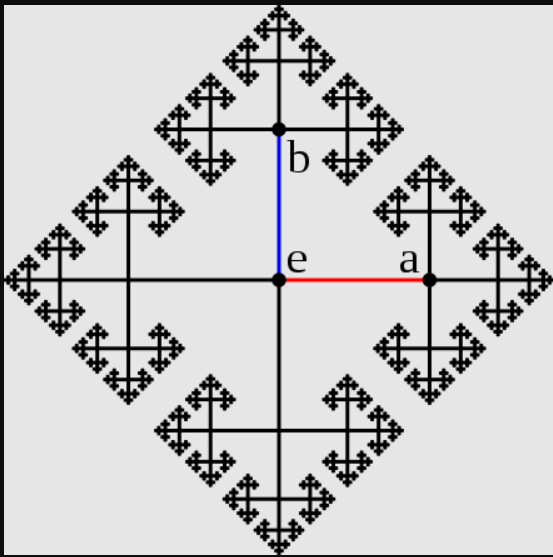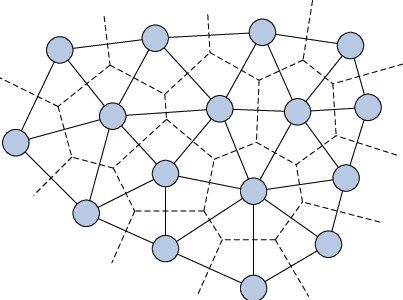2.1 Some useful classes of graphs :
Example 2.1 (Complete graph).
:
Example 2.2 (Cayley graphs).
Let be a finite group with a finite set of generators such that (symmetric) and (where is the identity). The Cayley graph is defined with vertex set and if . Since is symmetric, iff and so abelianness of the group does not matter.

Example 2.3 (Intersection graph).
Let be subsets of a set . Define with and if .
Example 2.4 (Delaunay graph).
- finite distinct set of points. For . Define . Delaunay graph is the intersection graph on with intersecting sets is called as the voronoi cell of .

Example 2.5 (Euclidean Lattices).
Let be the closed ball of radius centered at . The -dimensional integer lattice is the intersection graph formed with as vertex set and as the intersecting sets. Alternatively, if . Show that Euclidean lattices are Cayley graphs. Find the generators of .
Exercise 2.6.
Show that every graph is an intersection graph.
2.1.1 Some graph constructions
Example 2.7 (Bi-partite graph).
Graphs such that and .
Example 2.8 (Complementary graph).
Let be a graph. The complementary graph is
Example 2.9 (Line graph).
Let be a graph. The line graph is with vertex set and is they are adjacent in .
Example 2.10 (Petersen graph).
The vertex set of the graph is and if
Exercise(A) 2.11.
Show that the Petersen graph is the complement of the line graph of .
Exercise* 2.12.
Can you find the number of edges in a Line graph in terms of the number of edges in ?
Let have vertices and edges. For each vertex we assume its degree to be . In , two vertices share an edge iff the two edges in share a common vertex. So for each choice of two distinct edges coming out of a vertex, we get a distinct edge in . Thus, where if . But
Now sum of degrees of vertices is a graph is basically counting the edges twice, so finally we have,